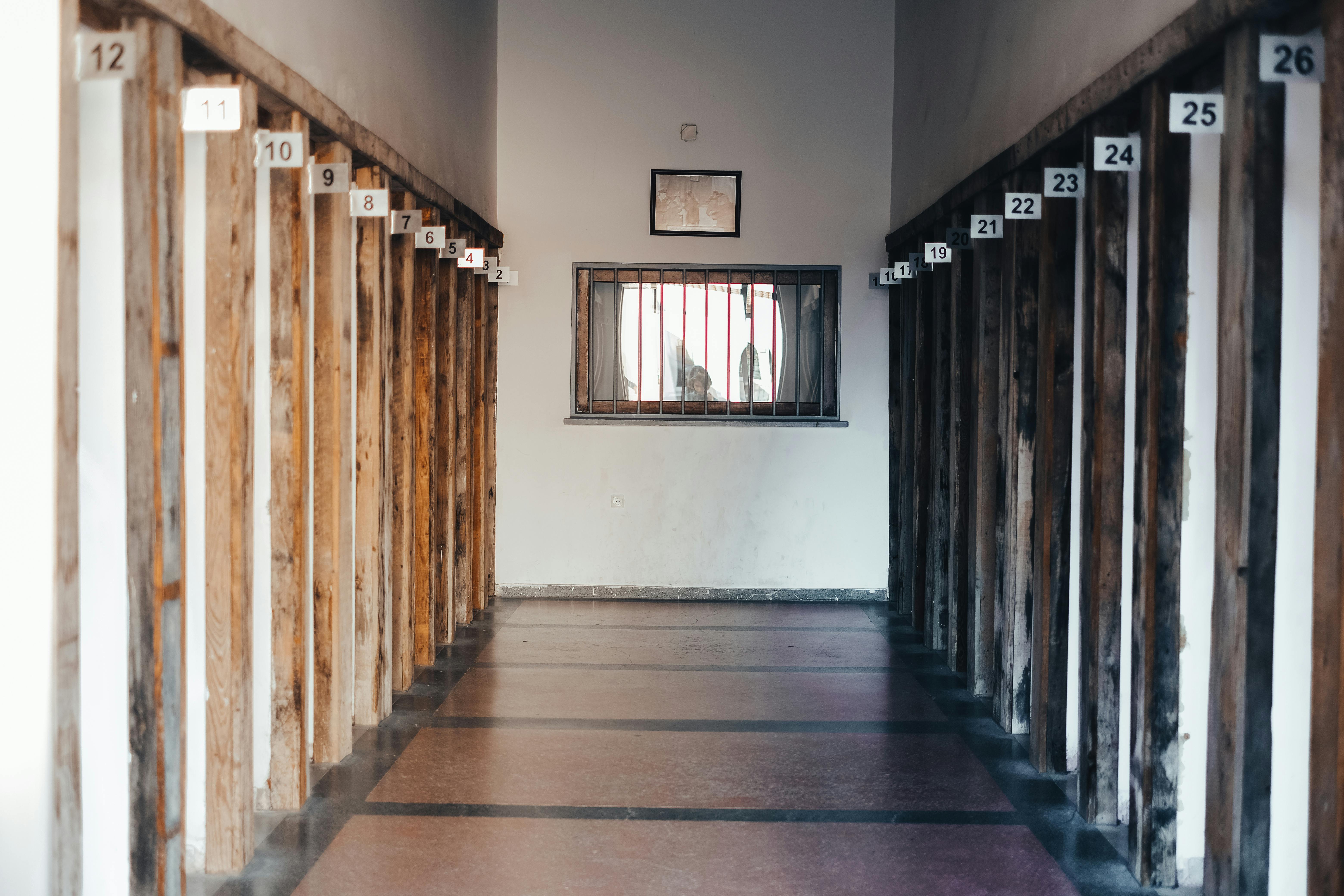Are you experiencing a frustrating performance drop in Windows 11? You’re not alone! Many users have reported sluggishness and reduced efficiency since upgrading to Microsoft’s latest operating system. In this article, we will explore essential Windows 11 performance drop fixes that can help unlock your PC’s full potential. With the right tweaks and optimizations, you can breathe new life into your computer, making it faster and more responsive than ever before.
Windows 11 offers an array of new features and enhancements, but these improvements can sometimes come at a cost—specifically, a noticeable dip in performance. Have you ever wondered why your once-speedy device now feels like it’s stuck in slow motion? Whether it’s due to resource-intensive updates, background applications hogging your CPU, or even outdated drivers, there are effective solutions to restore your PC’s performance. In the following sections, we will discuss tried-and-true methods for diagnosing and fixing these issues, ensuring you get the most out of your Windows 11 experience.
From adjusting your power settings to managing startup applications, our guide on Windows 11 performance drop fixes will cover a range of strategies designed to enhance your system’s speed and efficiency. Are you ready to reclaim your computer’s responsiveness and enjoy seamless multitasking? Join us as we delve into practical tips and expert advice that can transform your Windows 11 experience, leaving you with a faster, more powerful PC that meets all your needs!
10 Proven Tips to Boost Windows 11 Performance and Eliminate Slowdowns

Are you feeling frustrated with your Windows 11 performance lately? You’re not alone. Many users report slowdowns, lagging applications, and an overall sluggish experience. But don’t worry, you can easily tackle these issues and unleash your computer’s potential. Here are 10 proven tips to boost Windows 11 performance and eliminate slowdowns, making your digital life smoother and more enjoyable.
1. Keep Windows Updated
Always make sure your Windows 11 is up to date. Microsoft frequently releases updates that fix bugs and improve performance. Go to Settings > Windows Update to check for updates. It’s a simple step that can make a huge difference.
2. Disable Startup Programs
Many programs launch automatically when your computer starts, which can slow down boot time. You can disable unnecessary startup applications. Just press Ctrl + Shift + Esc to open Task Manager, then go to the Startup tab. Disable any programs you don’t need right away.
3. Optimize Visual Effects
Windows 11 comes with fancy visual effects which are nice but can be a drag on performance. You can adjust these settings by searching for “Performance Options” in the Start menu. Choose “Adjust for best performance” to turn off many of these effects, or manually select which ones to disable.
4. Clean Up Disk Space
A cluttered hard drive can lead to performance drops. Use the built-in Disk Cleanup tool to remove temporary files, system files, and other unneeded data. Go to Settings > System > Storage, and select “Temporary files” to start cleaning.
5. Use Storage Sense
Storage Sense automatically frees up space by deleting files you don’t need. You can enable it by going to Settings > System > Storage, and toggle on Storage Sense. You can also set it to run automatically based on your preferences.
6. Upgrade Your Hardware
Sometimes, the best way to give your Windows 11 a boost is to upgrade your hardware. Adding more RAM or switching to a Solid State Drive (SSD) can significantly improve performance. SSDs are much faster than traditional hard drives, which makes a big difference.
7. Check for Malware
Malware can slow down your system dramatically. It’s important to regularly scan your computer for viruses and other malicious software. Use Windows Defender or another trusted antivirus program to keep your system clean.
8. Adjust Power Settings
Windows 11 includes various power settings that can impact performance. Make sure you are using the “High Performance” plan. You can find this in Settings > System > Power & battery. This might consume more energy but can improve performance.
9. Manage Background Apps
Many apps run in the background, consuming resources. To manage these, go to Settings > Privacy > Background apps. Turn off background activity for apps that don’t need to run all the time, helping your PC run smoother.
10. Reset Windows 11
If all else fails, you might consider resetting Windows 11. This will reinstall the OS and can solve persistent issues. Go to Settings > System > Recovery, and select “Reset this PC.” Just remember to back up your data first.
By implementing these Windows 11 performance drop fixes, you can unlock your PC’s full potential and enjoy a faster, more responsive experience. Whether you’re gaming, working, or just browsing the web, these tips can help you make the most out of your system.
In a fast-paced digital world, having a well-performing computer is essential. So don’t let slowdowns ruin your productivity—take action today with these 10 proven tips!
Is Your Windows 11 Lagging? Here’s How to Diagnose and Fix Performance Issues Fast

Is your Windows 11 lagging? It’s a frustrating problem that can ruin your productivity and overall experience. Many users have reported performance issues since the release of Windows 11, and if you’re one of them, you’re not alone. This article will help you diagnose and fix performance issues fast. Plus, you will learn how to unlock your PC’s full potential with some essential Windows 11 performance drop fixes.
Understanding the Performance Drop
Performance drops in Windows 11 can happen for various reasons. Sometimes, it’s due to hardware limitations, but other times, it’s about software misconfigurations. Common causes include:
- Background applications using too many resources
- Outdated drivers
- Insufficient RAM
- Malware or viruses
- Hard drive space running low
Identifying the root cause is critical for fixing the lag. You should first monitor your system’s performance. You can do this by using the Task Manager. Just press Ctrl + Shift + Esc to open it. Once it’s open, you can check which applications are consuming the most resources.
Quick Diagnosis Steps
- Check Task Manager: Look at the CPU, Memory, and Disk usage. If one of them is constantly high, that’s your culprit.
- Run a Malware Scan: Use Windows Defender or another antivirus program to check for malicious software.
- Check for Updates: Sometimes, Windows updates can fix performance issues. Go to Settings > Update & Security > Windows Update.
- Disk Cleanup: Freeing up space on your hard drive can help boost performance. Go to Settings > System > Storage and use the Storage sense feature.
Windows 11 Performance Drop Fixes
Once you identify the problem, here are some quick fixes to enhance your system’s performance:
- Disable Startup Programs: Many applications set themselves to run on startup. Disabling unnecessary ones can speed up boot times and reduce lag.
- Update Drivers: Outdated drivers can seriously affect performance. Go to Device Manager, right-click on your hardware, and select “Update driver.”
- Adjust Visual Effects: Windows 11 has fancy visual effects that can drain resources. You can adjust these by going to System Properties > Performance Settings and selecting “Adjust for best performance.”
- Check Power Settings: Make sure your PC is set to High Performance. Go to Control Panel > Power Options and select the High Performance plan.
Additional Tips for Boosting Performance
- Increase RAM: If your computer is running slow and you often multitask, consider upgrading your RAM. More memory allows for better handling of multiple applications.
- SSD Upgrade: If you’re still using a traditional hard drive, upgrading to an SSD can give your system a significant speed boost.
- Regular Maintenance: Keep your system healthy by regularly running disk cleanup and defragmentation tools. This will keep your hard drive in good shape.
Performance Comparison: Windows 10 vs. Windows 11
Some users wonder if Windows 11 is inherently slower than Windows 10. Here’s a quick comparison:
| Feature | Windows 10 | Windows 11 |
|---|---|---|
| Performance Optimization | Moderate | Improved with updates |
| Gaming Features | Good | Enhanced DirectStorage |
| User Interface | Traditional | Modernized with Snap Layouts |
While Windows 11 does have features that can enhance performance, it also can require more system resources, which might lead to lag on older hardware.
If you follow these steps and tips, you should see an improvement in your Windows 11 performance. Remember that regular maintenance and updates are key. Keeping your system optimized will ensure that you can work efficiently without frustrating lags. So, if you’re feeling the slowdown, take action now and unlock your PC’s full potential!
Unlock Hidden Windows 11 Features: Optimize Performance Like a Pro with These 7 Tricks

Unlocking the hidden features in Windows 11 can seem like a daunting task, but it doesn’t have to be. With the right tips and tricks, you can optimize your PC’s performance like a pro. If you’ve experienced frustrating slowdowns or noticed a performance drop lately, there’s solutions available. Here are seven essential tricks to unlock your Windows 11 PC’s full potential.
1. Disable Unnecessary Startup Programs
Many programs automatically start when you boot your computer. This can lead to a sluggish start and overall slower performance. To manage these programs:
- Press Ctrl + Shift + Esc to open Task Manager.
- Go to the “Startup” tab.
- Disable any programs that you don’t need running at startup.
This small change can make a big difference in boot time and system responsiveness.
2. Optimize Visual Effects
Windows 11 comes with some stunning visuals, but they can sometimes take a toll on performance. You can adjust these effects:
- Go to Settings > System > About > Advanced system settings.
- Click on the Settings button under Performance.
- Choose “Adjust for best performance” or manually select which effects to disable.
This can significantly enhance how your system runs, especially on older hardware.
3. Update Device Drivers
Outdated drivers can cause performance issues and compatibility problems. Keeping them up-to-date is crucial. To check for updates:
- Right-click on the Start button and select Device Manager.
- Right-click on any device and select “Update driver”.
Regularly updating your drivers can prevent a performance drop and ensure everything runs smoothly.
4. Use Storage Sense
Storage Sense is a built-in feature that helps manage disk space. It automatically deletes unnecessary files. To enable it:
- Go to Settings > System > Storage.
- Turn on Storage Sense.
This helps to ensure that your PC is not bogged down by clutter, which can enhance overall performance.
5. Adjust Power Settings
Windows 11 has power settings that can affect performance. For optimal performance, switch to high performance mode:
- Go to Control Panel > Hardware and Sound > Power Options.
- Select High performance.
This can lead to better performance at the expense of battery life on laptops, so consider your needs.
6. Clean Up Your Hard Drive
A cluttered hard drive can slow down your system. Regularly cleaning it can help. Use the built-in Disk Cleanup tool:
- Type Disk Cleanup in the search bar and select it.
- Choose the drive you want to clean and follow the prompts.
Deleting temporary files, system files, and more can free up valuable space and improve speed.
7. Disable Background Apps
Windows 11 runs several apps in the background, which can consume resources. To disable these:
- Go to Settings > Privacy & security > Background apps.
- Turn off apps that you don’t need running.
This simple step can help improve your PC’s performance noticeably.
By implementing these tricks, you can combat Windows 11 performance drop issues effectively. Whether it’s through optimizing your system settings or managing your applications, these changes can unlock your computer’s full potential. With a few adjustments, your Windows 11 experience can be smoother and more enjoyable, making every task easier and faster. Start optimizing today, and enjoy a better-performing PC!
Windows 11 Performance Drop: 5 Common Causes and How to Resolve Them Today

Windows 11, the latest version of Microsoft’s operating system, has brought many new features and enhancements. However, some users experience a performance drop after upgrading. In this article, we will explore five common causes of Windows 11 performance drop and provide fixes to help you unlock your PC’s full potential.
Outdated Drivers Can Slow You Down
One of the most prevalent reasons for a performance drop in Windows 11 is outdated drivers. Drivers are essential for your hardware to communicate effectively with the system. If you don’t update them regularly, it can lead to sluggish performance, crashes, or even blue screens.
- Check for updates through Windows Update or the manufacturer’s website.
- Use Device Manager to identify outdated drivers.
- Consider using driver update software for a more automated approach.
Background Applications Eating Resources
It’s common for multiple applications to run in the background without you knowing it. These applications can consume significant system resources, leading to a noticeable performance drop.
- Press Ctrl + Shift + Esc to open Task Manager.
- Identify apps that are using high CPU or memory.
- Right-click and select “End Task” to close unnecessary applications.
Insufficient RAM Is A Major Performance Bottleneck
Another common cause of Windows 11 performance drop is insufficient RAM. If your system does not have enough memory to handle your tasks, it can slow down considerably, especially when multitasking.
- Check your RAM usage in Task Manager.
- If you’re consistently using over 80% of your RAM, consider upgrading to a higher capacity.
- Closing tabs in your web browser or applications can also help free up memory.
Malware and Viruses Can Be Sneaky Culprits
Malware and viruses can wreak havoc on your system, slowing it down significantly. They can run processes in the background, consume resources, and even corrupt files.
- Use Windows Defender or a trusted antivirus program to scan and remove threats.
- Regularly schedule scans to keep your system clean.
- Be cautious with downloads and emails to avoid phishing attacks.
Hard Drive Issues Can Cause Major Lag
Hard drive problems can severely affect your Windows 11 performance. If your hard drive is fragmented or nearing full capacity, it can slow down your system.
- Use the built-in Disk Cleanup tool to remove temporary files.
- Consider defragmenting your hard drive if you’re using an HDD.
- If you haven’t already, upgrading to an SSD can dramatically improve performance.
Quick Tips for Boosting Windows 11 Performance:
- Keep your system updated with the latest patches.
- Disable visual effects for better performance.
- Regularly clean up your hard drive and uninstall unused programs.
- Consider using performance optimization tools available online.
In summary, a performance drop in Windows 11 can be frustrating, but understanding the common causes can help you resolve these issues quickly. By updating your drivers, managing background applications, ensuring sufficient RAM, scanning for malware, and maintaining your hard drive, you can significantly improve your system’s performance. Remember, taking proactive steps is key to unlocking your PC’s full potential. Don’t wait, implement these fixes today and enjoy a smoother, faster computing experience!
Maximize Your Productivity: 6 Essential Performance Fixes for Windows 11 You Can’t Ignore

Are you feeling like your Windows 11 is running slower than a turtle? You not alone. Many users experience performance drops after upgrading to Windows 11. Its modern features can sometimes lead to unexpected slowdowns. But don’t worry! There are several performance fixes that can help you maximize your productivity and unlock your PC’s full potential. Here are six essential performance fixes you can’t ignore.
Check for Updates
Keeping your system updated is crucial. Microsoft often releases updates that include security patches and performance enhancements. Ignoring these updates can leave your system vulnerable and sluggish. To check for updates, go to Settings > Windows Update and click on “Check for Updates.” It’s a simple step that could give your PC a much-needed boost.
Disable Startup Programs
Have you ever noticed your computer takes forever to boot up? One reason could be too many programs starting up when your PC turns on. Disabling unnecessary startup programs can significantly speed up your boot time. To do this, press Ctrl + Shift + Esc to open the Task Manager, then navigate to the “Startup” tab. Right-click on the programs you don’t need at startup and select “Disable.” This will free up resources and speed things up.
Optimize Visual Effects
Windows 11 has a lot of fancy visual effects that can be a drain on your system’s resources. If your PC is struggling, consider optimizing these effects. Go to Control Panel > System and Security > System, then click on “Advanced system settings.” Under the Performance section, click “Settings” and adjust for best performance. You can always customize which effects to keep, but turning off some can really enhance performance.
Use Storage Sense
Is your hard drive getting filled up? A cluttered hard drive can slow down your computer significantly. Windows 11 has a built-in feature called Storage Sense that can help you manage storage automatically. To enable it, go to Settings > System > Storage. There, you can set it to delete temporary files and manage local content. Regularly clearing out unnecessary files can keep your system running smoothly.
Check Your Power Settings
Did you know your power settings can affect your PC’s performance? If you’re using a power-saving mode, it might limit your CPU performance. To change this, go to Settings > System > Power & battery. Select “Additional power settings” and choose the “High performance” plan. This can help unleash the full potential of your hardware, especially if you working on demanding tasks.
Run the Troubleshooter
Sometimes, the best way to identify issues is by using built-in tools. Windows 11 has various troubleshooters that can help diagnose and fix problems. To access these, go to Settings > System > Troubleshoot. From there, you can run troubleshooters for different categories, including performance issues. Running these can sometimes find and fix problems you didn’t even realize were there.
Implementing these Windows 11 performance drop fixes can dramatically change how your PC performs, allowing you to maximize your productivity. Each of these steps addresses common issues that can bog down your system, giving you a smoother and faster experience. Whether you’re gaming, working, or just browsing, a speedy PC is essential. Don’t let a slow computer hold you back. Take the time to apply these fixes, and you’ll be amazed at the difference it makes!
Conclusion
In conclusion, addressing performance drops in Windows 11 is crucial for ensuring a smooth and efficient user experience. Key strategies include updating drivers and system software, optimizing startup programs, and adjusting power settings to prioritize performance. Additionally, utilizing built-in troubleshooting tools can help identify and resolve underlying issues. Consider disabling unnecessary visual effects and managing background applications to free up system resources. Regular maintenance, such as disk cleanup and defragmentation, also plays a significant role in enhancing performance. By implementing these fixes, users can significantly improve their device’s responsiveness and overall functionality. We encourage you to take action today—assess your system, apply these solutions, and experience the full capabilities of Windows 11. Don’t let performance issues hold you back; your computer deserves to run at its best!

